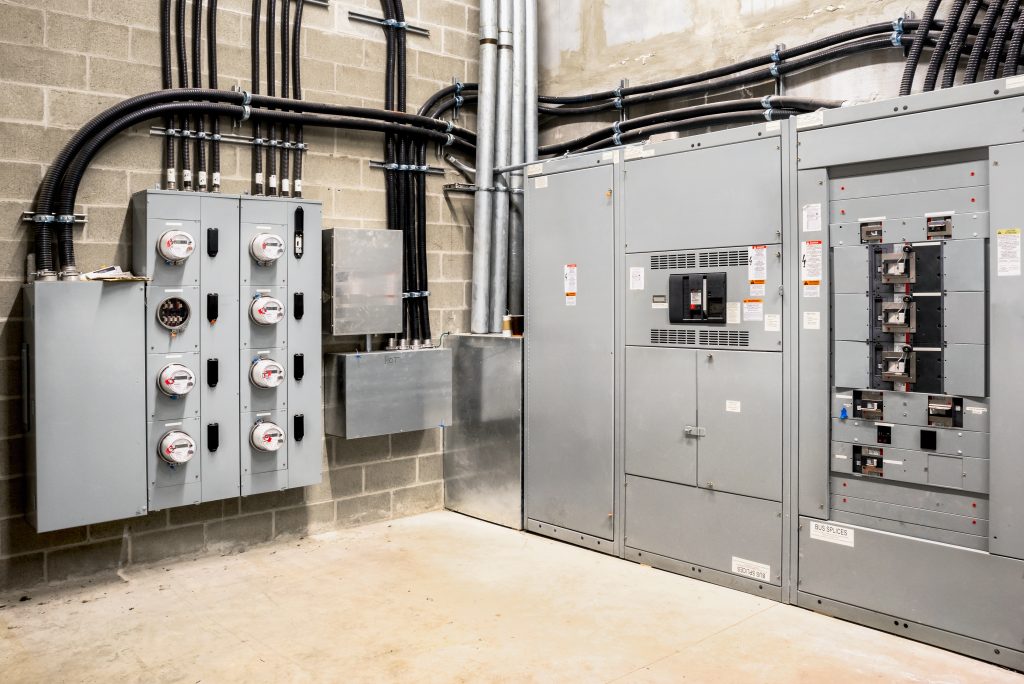When it comes to electrical systems, the complexity of a commercial building far surpasses that of a typical home. These differences are rooted in a range of factors, from the size and purpose of the building to the types of equipment it needs to support. Understanding why electrical systems in commercial buildings are more intricate can help business owners appreciate the importance of proper installation, inspection, and maintenance.
Scale and Power Demand
One of the most obvious reasons for the added complexity is the sheer scale of commercial buildings. Offices, warehouses, retail spaces, and industrial facilities often span large areas and can have multiple floors, all requiring extensive wiring, circuits, and power distribution systems. A single-family home typically uses around 200 amps of electricity, while a commercial building may require several thousand amps. This increased demand necessitates the use of more robust electrical infrastructure, including higher-capacity transformers, panel boards, and switchgear.
Variety of Equipment and Systems
Commercial buildings house a wide array of electrical equipment and systems that aren’t present in residential homes. From HVAC systems to elevators, data centers, industrial machinery, and even complex lighting setups, each of these systems has its own electrical needs. For example, a factory will have heavy-duty equipment running on three-phase power, which is more efficient for large-scale operations but is rarely used in residential settings.
Complex Electrical Code Requirements
Another factor contributing to the complexity of commercial electrical systems is the stringent code requirements that apply to these buildings. Commercial structures must adhere to more comprehensive regulations than homes because they are responsible for the safety and well-being of employees, customers, and tenants. The National Electrical Code (NEC) has distinct standards for commercial properties, focusing on fire prevention, emergency systems, and ensuring the reliability of power in critical areas like data centers or hospitals. These standards require more advanced planning, materials, and installation techniques.
Redundancy and Backup Systems
Many commercial buildings require backup power systems, such as generators or uninterruptible power supplies (UPS), to ensure that critical operations continue during a power outage. These systems add another layer of complexity to the electrical design. Homes may have backup generators, but in commercial buildings, redundancy is often built into the wiring, with additional circuits and fail-safes to prevent downtime. For businesses that rely on constant power—such as hospitals or data centers—these backup systems must be designed with the highest level of reliability and precision.
Lighting and Security Systems
Commercial buildings often require more complex lighting designs, especially when it comes to energy efficiency and security. While homes usually have straightforward lighting needs, commercial spaces might integrate smart lighting, motion sensors, and emergency lighting systems. These systems not only increase electrical complexity but also require constant monitoring and testing to ensure compliance with safety codes.
Environmental Control Systems
In many commercial properties, temperature, humidity, and air quality are controlled by sophisticated HVAC systems, which are often integrated with energy management systems. These systems can include intricate electrical components that coordinate climate control across different zones of the building. The need for precise environmental conditions in certain industries, such as pharmaceuticals or technology, adds further layers of complexity to the electrical system.
The Role of Professional Electrical Inspections
Given the complexities involved, it’s critical that commercial building owners and managers prioritize professional electrical inspections. Unlike a home, where electrical issues might result in minor inconvenience, a malfunction in a commercial electrical system can lead to major operational disruptions, costly repairs, or even safety hazards. Regular inspections ensure that everything is functioning as it should, while also identifying potential problems before they escalate.
In conclusion, the complexity of electrical systems in commercial buildings is driven by the scale, variety of equipment, safety regulations, and need for reliability. Understanding these differences highlights the importance of skilled electrical design, installation, and maintenance, ensuring that businesses can operate smoothly and safely.

